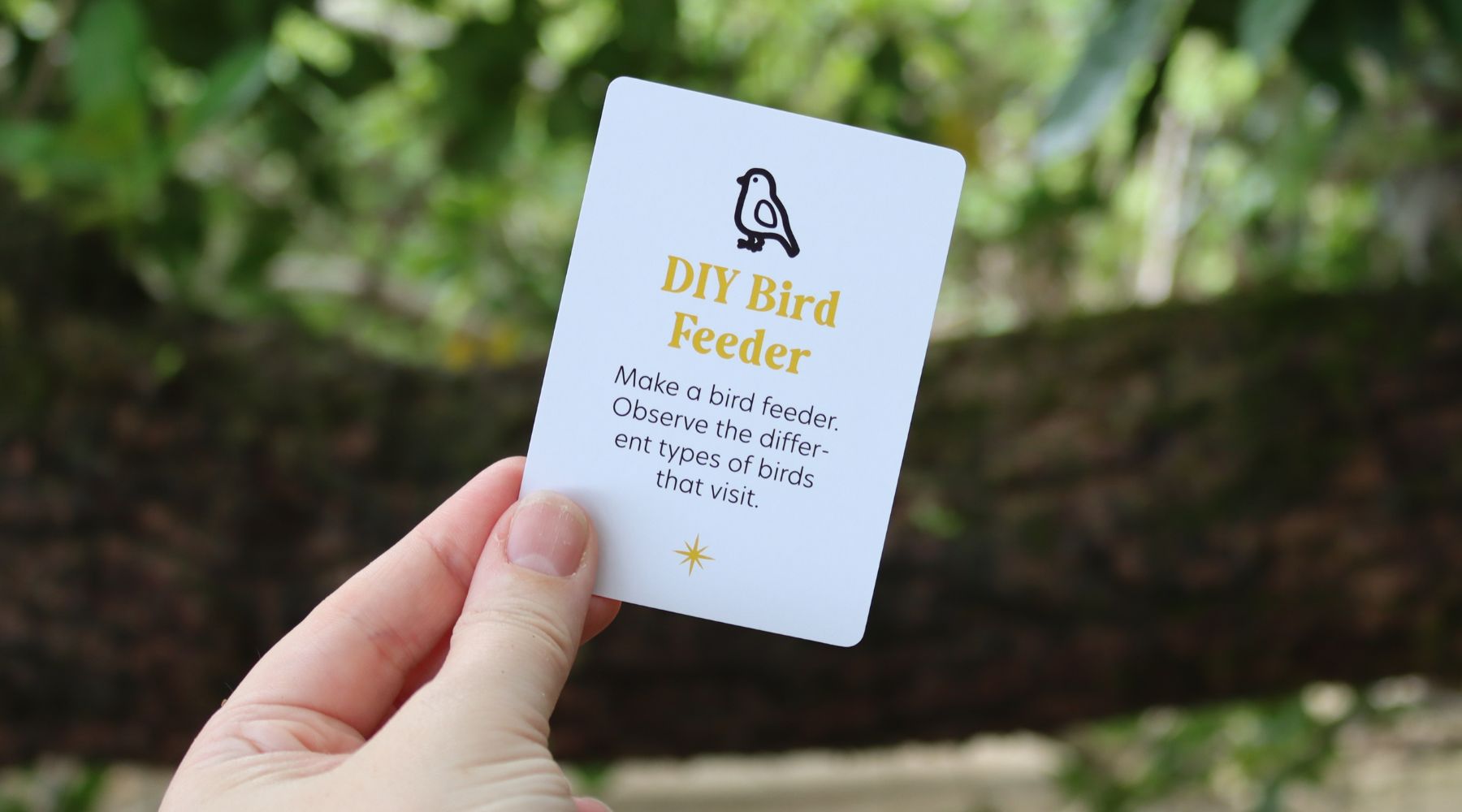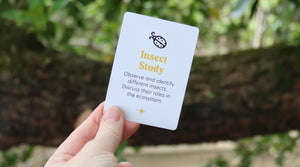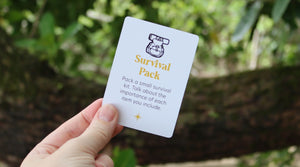Building a bird feeder is a simple and fun way to invite wildlife into your backyard or campsite. By using natural materials, you not only create a sustainable feeder but also give birds a place to rest and refuel. In this blog, we’ll show you how to make a bird feeder with items you can find outdoors and how to observe the different types of birds that visit.
Materials You’ll Need:
- A large pine cone or sturdy stick
- String or twine
- Peanut butter or honey (as a sticky base)
- Birdseed or a mix of seeds, oats, and nuts
- Scissors
- A plate or tray to roll the feeder in seeds
Step-by-Step Guide to Making Your Natural Bird Feeder
1. Find Your Base
Look for a large, open pine cone or a thick, sturdy stick that has small branches where you can attach the bird seed. If you can’t find either, a small hollow log can also work as the base for your feeder.
2. Tie the String
Wrap a piece of string or twine around the top of your pine cone or stick and tie a knot. Leave enough length so that you can hang the feeder from a tree branch later. Make sure it’s secure!
3. Add the Sticky Base
Spread peanut butter or honey all over the pine cone, stick, or log. The sticky surface will help the seeds stick to the feeder and give the birds something nutritious to eat.
4. Roll in Birdseed
Pour birdseed onto a plate or tray and roll your sticky pine cone or stick in the seeds until it’s completely covered. Make sure the seeds are pressed into all the cracks and crevices so that birds can easily grab them.
5. Hang Your Bird Feeder
Find a sturdy tree branch and hang your bird feeder where you can easily watch the birds that visit. Make sure it’s in a safe spot, away from heavy foot traffic or predators.
Observing the Birds That Visit
Once your bird feeder is up, it’s time to watch and wait for your feathered friends to arrive. Different birds are attracted to different types of seeds, so the variety of species you’ll see depends on what you’ve used. Here are some birds you might spot in Australia:
1. Rainbow Lorikeet
- Identification: These birds are brightly coloured with a mix of blue, green, orange, and yellow feathers. They are noisy and sociable, often seen in groups.
- What They Like: Rainbow Lorikeets love sweet foods, so if you use honey or fruit with your feeder, you might attract them.
- Pro Tip: Hang your feeder near flowering plants if you want to attract lorikeets, as they’re naturally drawn to nectar.
2. Eastern Rosella
- Identification: Eastern Rosellas have redheads, yellow bodies, and bright green wings. They’re smaller than lorikeets but equally colourful.
- What They Like: These birds enjoy seeds and grains, so a seed mix will likely bring them to your feeder.
- Pro Tip: These birds are a bit shy, so try to observe from a distance if they visit.
3. Magpie
- Identification: Magpies are black and white birds with a distinct warbling song. They’re bold and curious, often found in suburban areas.
- What They Like: Magpies love seeds, nuts, and even small insects. If your feeder has a good mix, they might stop by for a snack.
- Pro Tip: Magpies are often seen on the ground, so you may spot them foraging near your feeder rather than perching on it.
4. Cockatoo
- Identification: Cockatoos are large, white or pink birds with a distinctive crest of feathers on top of their heads. They’re very vocal and can be seen in large flocks.
- What They Like: These birds enjoy a variety of seeds, nuts, and even fruit. They are known to chew through tougher materials, so keep an eye on your feeder if they arrive!
- Pro Tip: Cockatoos can be quite destructive with feeders, so make sure your setup is strong enough to handle these large birds.
5. Kookaburra
- Identification: Kookaburras are large birds with a brown and white colour pattern and a distinctive laugh-like call.
- What They Like: They prefer meat, so while they might not eat from your seed-based feeder, you could spot them hunting nearby.
- Pro Tip: Kookaburras like to perch high up and watch for prey, so keep an eye on tree branches above your feeder.
Why Are Birds Important to the Ecosystem?
Birds play critical roles in maintaining healthy ecosystems. Here are a few reasons why they’re so important:
- Pollinators: Birds like Rainbow Lorikeets help pollinate flowers as they feed on nectar.
- Seed Dispersers: Birds spread seeds when they eat fruit or seeds and drop them in different areas. This helps plants grow in new locations.
- Pest Control: Birds like magpies and kookaburras help control insect and small animal populations, keeping the ecosystem in balance.
Tips for Birdwatching
- Be Quiet and Patient: Birds can be easily startled, so stay quiet and give them space when they approach your feeder.
- Use Binoculars: If you have binoculars, use them to get a closer look at the birds without scaring them away.
- Keep a Birdwatching Journal: Write down the different birds you see, what they eat, and how they behave. It’s a great way to learn about the wildlife in your area.
Enjoying the Birds in Your Area
Building a natural bird feeder is not only a fun craft project but also a way to observe the beauty of nature up close. Different birds will visit throughout the day, so keep your eyes open for new species, and enjoy the peaceful moments of birdwatching.



